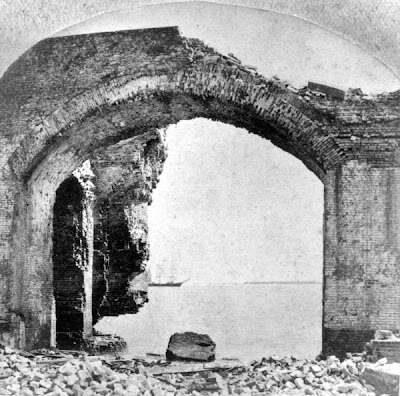Julius Peter
Garesché was born April 26th 1821 near Havana, Cuba. He was able to attend Georgetown College
beginning in 1833. After four years at
Georgetown, Garesché received an appointment to the United State Military
Academy at West Point. He graduated in
the class of 1841 and began his military carrier in the 4th United
States Artillery. After duty on the
frontier and action during the Mexican American War he reached the rank of
Captain in 1855. Garesché was also a
devout Catholic and he received recognition for services performed for the
church from Pope Pius IX in the form of the Knight of St Sylvester medal.
When the
Civil War started Garesché became the Chief of Staff with the rank of
Lieutenant Colonel for Union Major General William S Rosecrans. This placed him with the Army of the
Cumberland in the Western Theater. The
Battle of Stone River was the first combat of the war for Garesché and on
December 31 1862 as he rode with Rosecrans during the battle he was decapitated
by a cannonball. Shortly after Union
General Philip H Sheridan found Garesché’s body and removed his bible and West
Point ring from the dead body. Garesché
is buried in the Mount Olivet Cemetery in Washington, DC.
If you’re
interested in reading more, check out, Eccentric Officer 'Knew' He Would Die in His First Battle and The Gallant Garesché































